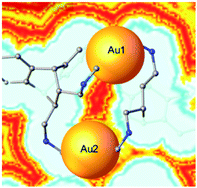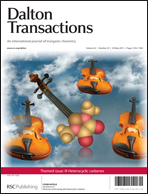Human cancerous and healthy cell cytotoxicity studies of a chiral μ-dicarbene–digold(i) metallamacrocycle†
Abstract
A novel eighteen membered chiral macrocyclic dicarbene–digold complex [(μ-diNHC)AuI]2[OTF]2(8-(+/−)) was synthesized and characterized. Starting with enantiopure diNHC imidazolium salt ligand precursors enables access to the enantiopure versions of the digold(I) metallamacrocycles, 8-(+) and 8-(−). In vitro cytotoxicity studies indicate 8-(+/−) is moderately cytotoxic to both healthy and cancerous cell-lines, with no specificity. Confocal microscopy indicates the digold metallamacrocycle penetrates the cell membrane and causes cell death via apoptosis, as evidenced by DNA electrophoresis. The complex 8-(+/−) is characterized by a combination of NMR techniques (gDQCOSY, gHSQC, gHMBC and ROESY), single crystal X-ray diffraction, and combustion analysis.

- This article is part of the themed collection: N heterocyclic carbenes

 Please wait while we load your content...
Please wait while we load your content...